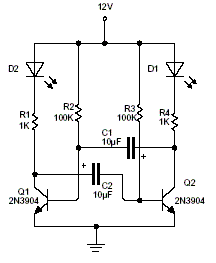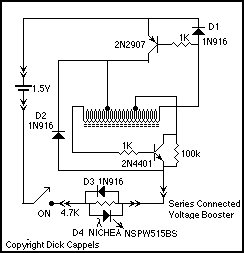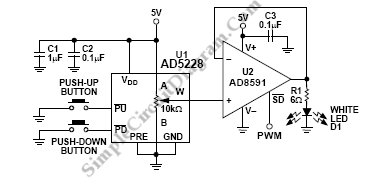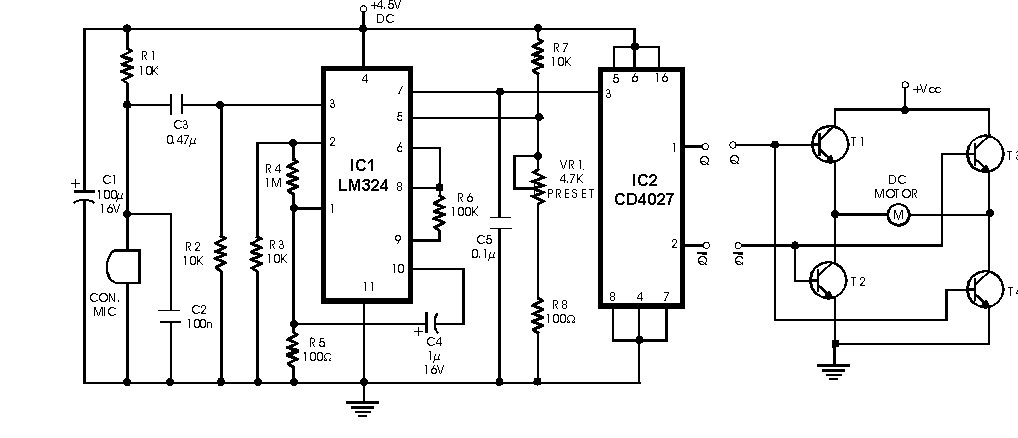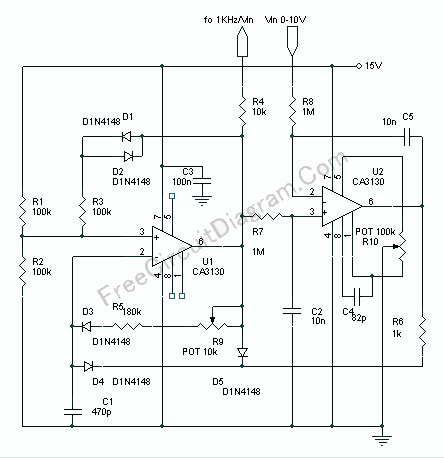
White LED Step-Up Converter in SC70 and ThinSOT
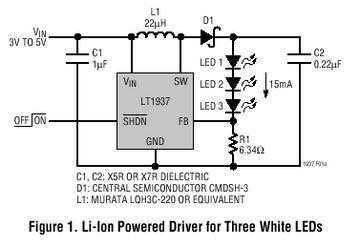
The LT1937 is a step-up DC/DC converter specifically designed to drive white LEDs with a constant current. The device can drive two, three or four LEDs in series from a Li-Ion cell. Series connection of the LEDs provides identical LED currents resulting in uniform brightness and eliminating the need for ballast resistors. The LT1937 switches at 1.2MHz, allowing the use of tiny external components. The output capacitor can be as small as 0.22µF, saving space and cost versus alternative solutions. A low 95mV feedback voltage minimizes power loss in the current setting resistor for better efficiency.
The LT1937 is a highly efficient step-up converter optimized for driving white LEDs, making it an excellent choice for portable and battery-operated applications. The device operates by boosting the voltage from a single Li-Ion cell to the required forward voltage for multiple LEDs connected in series. This configuration ensures that each LED receives the same current, which is critical for maintaining uniform brightness across all LEDs and enhancing the overall reliability of the lighting system.
In terms of circuit design, the LT1937 requires minimal external components due to its high switching frequency of 1.2MHz. This allows for the use of smaller inductors and capacitors, which not only reduces the size of the circuit but also lowers the overall cost. The typical application circuit includes an inductor, a diode, and a few passive components, alongside the LT1937 itself. The use of an output capacitor as small as 0.22µF is particularly advantageous in compact designs where space is at a premium.
The feedback mechanism of the LT1937 is designed to ensure efficient operation by utilizing a low feedback voltage of 95mV. This characteristic minimizes the power loss across the current setting resistor, which is essential for enhancing the overall efficiency of the LED driver circuit. The design also eliminates the need for ballast resistors, which are typically used in parallel LED configurations to balance the current, thus simplifying the circuit and improving reliability.
Overall, the LT1937 provides a robust solution for LED driving applications, ensuring high efficiency, compact size, and uniform brightness across multiple LEDs, making it suitable for a wide range of consumer electronics, automotive lighting, and other illumination applications.The LT®1937 is a step-up DC/DC converter specifically designed to drive white LEDs with a constant current. The device can drive two, three or four LEDs in series from a Li-Ion cell. Series connection of the LEDs provides identical LED currents resulting in uniform brightness and eliminating the need for ballast resistors.
The LT1937 switches at 1.2MHz, allowing the use of tiny external components. The output capacitor can be as small as 0.22µF, saving space and cost versus alternative solutions. A low 95mV feedback voltage minimizes power loss in the current setting resistor for better efficiency. 🔗 External reference
The LT1937 is a highly efficient step-up converter optimized for driving white LEDs, making it an excellent choice for portable and battery-operated applications. The device operates by boosting the voltage from a single Li-Ion cell to the required forward voltage for multiple LEDs connected in series. This configuration ensures that each LED receives the same current, which is critical for maintaining uniform brightness across all LEDs and enhancing the overall reliability of the lighting system.
In terms of circuit design, the LT1937 requires minimal external components due to its high switching frequency of 1.2MHz. This allows for the use of smaller inductors and capacitors, which not only reduces the size of the circuit but also lowers the overall cost. The typical application circuit includes an inductor, a diode, and a few passive components, alongside the LT1937 itself. The use of an output capacitor as small as 0.22µF is particularly advantageous in compact designs where space is at a premium.
The feedback mechanism of the LT1937 is designed to ensure efficient operation by utilizing a low feedback voltage of 95mV. This characteristic minimizes the power loss across the current setting resistor, which is essential for enhancing the overall efficiency of the LED driver circuit. The design also eliminates the need for ballast resistors, which are typically used in parallel LED configurations to balance the current, thus simplifying the circuit and improving reliability.
Overall, the LT1937 provides a robust solution for LED driving applications, ensuring high efficiency, compact size, and uniform brightness across multiple LEDs, making it suitable for a wide range of consumer electronics, automotive lighting, and other illumination applications.The LT®1937 is a step-up DC/DC converter specifically designed to drive white LEDs with a constant current. The device can drive two, three or four LEDs in series from a Li-Ion cell. Series connection of the LEDs provides identical LED currents resulting in uniform brightness and eliminating the need for ballast resistors.
The LT1937 switches at 1.2MHz, allowing the use of tiny external components. The output capacitor can be as small as 0.22µF, saving space and cost versus alternative solutions. A low 95mV feedback voltage minimizes power loss in the current setting resistor for better efficiency. 🔗 External reference
